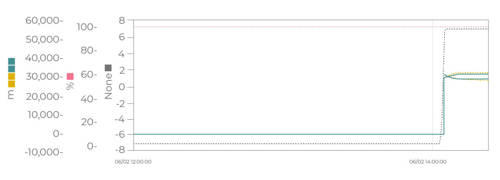Why do pipelines leak?
Pipeline leaks are events that we never want to happen, but they still occur on a regular basis. To mitigate the effects of a leak, it’s vital to not only choose the right leak detection system but to understand why pipelines leak in the first place.
A range of factors can contribute towards a leak, some being more obvious than others, but the categorized causes of pipeline leaks are generally listed as:
- Excavation and outside force
- Material and equipment
- External and internal corrosion
- Operational causes
- Natural causes
- Other causes
While a pipeline leak can be the result of internal damage, it’s typically external forces that cause a pipeline leak.
The extremity of a leak is also dependent on the pipeline’s configuration and the fluid it’s transporting. Although water mains leak 200,000 times every year in the US and hazardous liquid pipelines leak approximately 300 times per year, the latter’s impact is worse. Oil spills need cleaning up and volatile liquids pose an immediate threat if they form a flammable gas cloud. We only need to look back at historic leak events to understand the consequences of a leak and appreciate the importance of an effective leak detection system.
Leak detection without a model
On a single-inlet single-outlet pipeline, there are many ways of detecting a leak that don’t require building, maintaining and simulating a full transient model.
Atmos Pipe – a statistical volume balance system is an example of a non-model based solution that have achieved outstanding success as a leak detector. It uses both time-of-flight and friction method to locate leaks within a few kilometers.
In recent years, Atmos Wave has located tapping points to an accuracy of a few meters in crude and multi-product pipelines where thefts are detected. It operates with negative pressure wave technology and high speed data sampling of dynamic pressure sensors.
But when it comes to complex gas pipeline networks, a real-time transient model (RTTM) is an effective method for leak detection.
Introducing gas leak detection with a real-time transient model
The compressibility of a gas means the speed of sound is lower in a gas pipeline than for a liquid. Gas also has a lower density and even a slight pressure change can cause a big change in flow. Sufficiently large enough pressure changes in a gas pipeline can create a shock wave with choked flow which can result in leaks.
Gas pipelines undergo frequent transients – which chapter 9 of “The Atmos book of pipeline simulation” discusses in greater detail, so a well-tuned, real-time transient model-based leak detector is an effective way to detect a leak on a complex gas pipeline and it negates the need for sniffer dogs, boats and helicopters which are slow and expensive.
What does a real-time transient model (RTTM) need to work?
The strength of a real-time transient model is that it relies on accurate physical simulation to accurately identify leaks and avoid flooding pipeline operators with false alarms. This means that a model-based leak detector will only work if a complete physical description of the pipeline network is baked into the model though. Additionally, accurate RTTMs require that the pressure, flow rate and ambient temperature are metered at every inlet and outlet to facilitate layers describing the pipe, insulation and surroundings.

Figure 2: The typical instrumentation required for a model-based leak detector
To perform leak detection effectively, a real-time transient model can only reliably monitor a given region if a pipeline’s every inlet and outlet has valid, good quality measurement of both flow rate and pressure.
How does a real-time transient model (RTTM) work?
To avoid false alarms, persistent flow meter reading discrepancies can be gradually learned by a RTTM to bring their corrected readings into agreement over a steady, leak-free period. Any imbalance in flow, inflow minus outflow, should cause a change in inventory.
Pressures can be converted into modeled inventory to compare with the last step’s inventory and calculate how it has changed. When a leak occurs, the concerning pipe section depressurizes. This change in inventory no longer accounts for measured flow imbalance and a discrepancy is detectable because pressure-deduced inventory falls below expectations.
By using this method, leaks can be detected even where inflow doesn’t exceed outflow, but the success of this method relies on a pressure-deduced inventory model working in parallel with the RTTM.
The pressure-only model for leak location
Much like its leak detector, the Atmos SIM leak locator uses the same inputs but works in sections bounded by pressure meters. Leak locators are more sensitive to metered pressure fluctuations than a leak detector because they calculate inventory and flow rate in their sections.
Atmos SIM’s leak locator uses an algorithm that has been successful at leak location during hydraulic transients on liquid pipelines and subsequent experiments have found that a slightly modified version of the algorithm accurately locates leaks on gas pipelines too.

Figure 3: A leak locator estimates where a detected leak lies within a pipeline
Locate leaks with accuracy
Just as an airline pilot overwhelmed with warnings cannot properly act on them, a pipeline operator flooded with false alarms will find none of them useful.
Locating leaks using a real-time transient model ensures accurate estimations of a leak’s location and size and less unnecessary interruption to routine pipeline operations.
For more information on how RTTM together with pipeline simulation can efficiently locate leaks, read chapter ten of The Atmos book of pipeline simulation.
References
1 “The Atmos book of pipeline simulation”
Download chapter 10 Order the book
Ready for chapter 11?
Chapter 11 covers how investing in a strong, underlying physical pipeline model for offline studies pays dividends during a pipeline’s lifetime.
